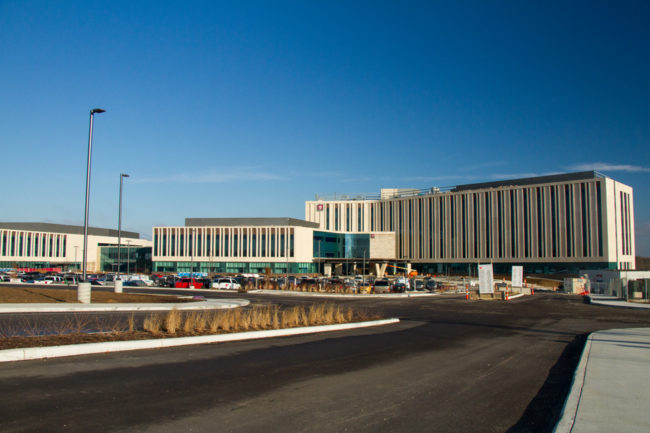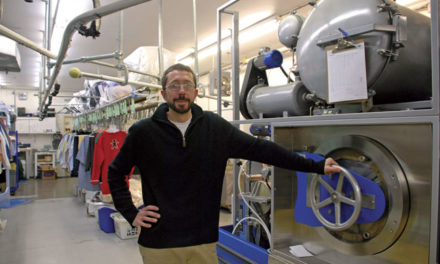
by SUSAN M. BRACKNEY
Brian Shockney already had his work cut out for him—and then COVID-19 came along. As president of Indiana University Health South Central Region, Shockney has been managing teams working to build and transition to the new $557 million IU Health Bloomington Regional Academic Health Center (RAHC). Expected to begin admitting patients in November 2021, the 720,000-square-foot facility located near the 45/46 Bypass will serve 470,000 residents across 11 counties.
“We were doing really well until the [COVID-19] spike hit,” Shockney recalls. “We were seeing, especially in the skilled trades, loss of numbers of people at the [RAHC] worksite.”

He continues, “If I’m an electrician or a drywaller, and I’ve been exposed to COVID-19, now I’m off of the project to isolate for 14 days. That work does not get done unless we find another contractor to put in that place, and that’s just not easy to do.”
To manage the disruption—and manage to stay on track—Shockney and his colleagues leaned into the chaos. “We’ve taken several people off of their full-time jobs and put them full time on this project,” Shockney says. (Meanwhile, each subsequently vacated role also had to be backfilled by other staffers.) The chief operating officer, chief nursing officer, regional director of case management, and many others were placed on an oversight team tasked with creatively shuffling resources and personnel to ensure the RAHC opens on time, stays within budget, and fulfills the original vision for the hospital.
That vision still includes fully private, “acuity adaptable” patient rooms—staffed and equipped to handle the most critical cases. The new facility will also feature a more robust behavioral health component, short-term stay areas, touchless app-based registration, and more.
“We talk about COVID being disruptive, but this [reshuffling] is disruption as well,” Shockney says. “And this is self-inflicted disruption!” So far, the “self-inflicted disruption” seems to be working, and the hospital’s opening timeframe remains unchanged, with hospital officials already discussing the logistics of different move-in routes with public safety officials.
Occupying 110,000 square feet, the educational facility building of the RAHC is now open. It’s designed to provide IU and Ivy Tech Community College–Bloomington students with hands-on training in medicine, nursing, social work, and related fields. Other areas of the hospital are ready now—or are nearly so.
Despite COVID-19 constraints, hospital board and oversight team members are monitoring the progress via drone-guided tours. “We have a drone and a videographer that we contract with,” Shockney says. “They go through the entire space and do an update for all of us.”
As important as the physical space are employee training and transitioning. To get a jump on necessary preparations, staffers have relied on e-learning resources and virtual and augmented reality.
“We have had to take our playbook and we’ve had to modify the playbook to make sure that we move forward and that the vision is realized,” Shockney says. “All of those things that we designed and envisioned [before COVID-19], we are not going to compromise on.”










